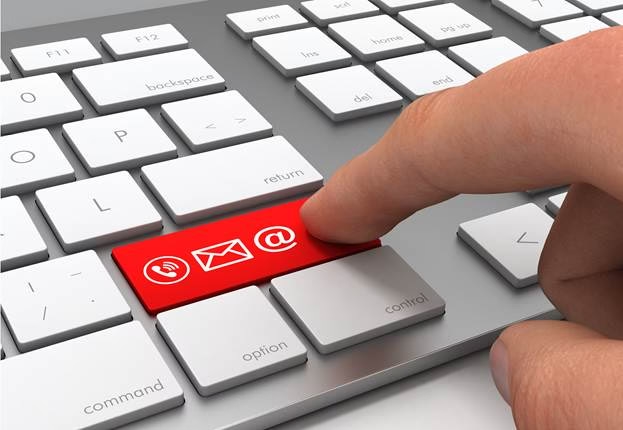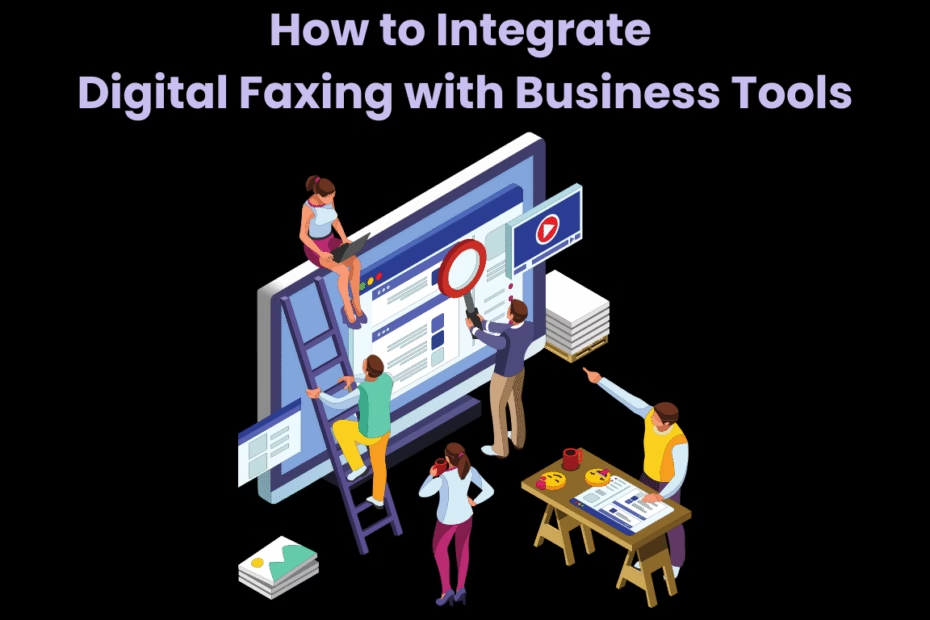| Key Takeaways
● Digital faxing uses the Internet, offering a secure alternative to traditional phone line faxing. ● Encrypted networks protect data, making digital faxing ideal for industries like finance and healthcare under HIPAA and GDPR regulations. ● Operates on PCs and mobile devices, eliminating the need for dedicated fax machines. ● Easily integrates with Gmail, Google Drive, Docs, Chrome, and Google Voice for secure faxing. ● PDFs are ideal for digital faxing with added security features like encryption, passwords, and e-signatures. ● Sending faxes via email uses fax numbers instead of email addresses, offering stronger encryption than standard email protocols. ● Digital faxing supports larger image files (e.g., JPEG) without significant quality loss, unlike traditional faxing. ● MFDs can integrate with digital fax apps, combining traditional and modern faxing with added features like cloud storage. ● Digital faxing provides cost savings and compatibility with existing business tools, enhancing workplace efficiency. |
Faxing has evolved significantly from its origins as a telecopy. The latest generation of faxes favors the Internet over traditional phone lines, allowing users to exchange critical information over a more secure medium. These digital faxes are being used in many industries, namely those legally mandated to safeguard consumer data, such as finance and healthcare.
Digital (also called electronic or online) faxing has the upper hand in many crucial aspects. Its encrypted network protects data in transit from being pilfered by cybercriminals lying in wait. This alone makes it a must for businesses obligated to comply with data privacy laws like the US’s HIPAA and the EU’s GDPR.
However, its most significant benefit is its versatility. Digital faxing can operate on a PC or mobile device, eliminating the need for a dedicated fax machine. It’s also designed to work with a range of business tools, and as you’ll learn here, setup is easy.

Google Workspace
Google Workspace isn’t a single software but a collection of 15 Google services tailored to businesses. Several of these include its email service Gmail, cloud-based storage service Google Drive, and AI assistant Gemini.
Google Workspace is one of two giants of the productivity software market, the other being Microsoft Office 365. The latest numbers show that the former has a slight advantage over the latter, 50.34% vs. 45.46% as of February 2025. It’s also the preferred platform of nearly 13 million websites, roughly three times as many as Office 365. (1)
It’s easy to see why the Google platform has more users. Apart from offering a free option, albeit limited, it excels at live collaboration. Documents can be edited and revised in real time, and it’s as easy as having authorized access to them. Additionally, its monthly cost per user is slightly lower compared to its Microsoft counterpart.
Despite not having its own digital fax service, Google Workspace can accommodate third-party apps for the role. The apps can be integrated into the platform’s proprietary services, namely Gmail and Google Drive, to send and receive digital faxes securely. The procedure differs depending on your preferred method.
| Gmail
Same as sending an email, but it uses the recipient’s fax number (followed by the app’s preferred email domain) in place of the email address. |
Drive/Docs
Save the document using the Print to Fax function and select the fax app as the printer. Then, use the fax app to attach the file for your outgoing fax. |
Chrome
Similar procedure to faxing through Drive or Docs. If the fax app comes with a web portal, check if it can be accessed via Chrome for easier sending. |
Google Voice
Port your Google Voice number to the fax app. Some apps may restrict the number of faxes you can receive, so make sure to understand your app’s functionality. |
Nevertheless, sending a fax with Google Workspace and eFax (or any digital faxing service) offers peace of mind and cost savings. Between its 256-bit Advanced Encryption Standard (AES-256) and compatibility with most devices, today’s faxing apps ensure that only the sender and recipient exchange valuable information.
Adobe Acrobat
The Portable Document Format (PDF) revolutionized how offices exchanged information. The brainchild of Adobe co-founder John Warnock, this file format enabled businesses to send and receive forms and other documents without either the sender or recipient being present in the brick-and-mortar workplace.
Without innovations such as PDF files, remote work during the pandemic may have been different, if not impossible. As workers settled for a long work-from-home arrangement, a surge of electronic file exchanges naturally followed.
Ashley Still, former Adobe Senior Vice President and General Manager for Creative Product Group, estimated in 2020 that there were 2.5 trillion PDF files worldwide. Considering the world population was 7.9 trillion that year, there was a PDF file for one in three people. (2)
The format offers several advantages over other formats that make it ideal for digital faxing, starting with security. You can never have too much security in this day and age, and PDF files add their own encryption and security measures to an encrypted online fax network. These include—but aren’t limited to—passwords, electronic signatures, and watermarks.
As a widely used file format, PDF is acceptable for most digital faxing apps. The steps are similar across the Adobe Acrobat system: Acrobat (Standard and Pro), Adobe Reader, and Adobe Scan. Here are the steps for the first two.
-  Open the file in Acrobat or Reader.
-  Go over the file to prepare it for faxing.
-  Log in to your preferred faxing service.
-  Go to File, then click Print.
-  Choose the fax format and click Print.
-  Upload the fax file to the app for sending.
Meanwhile, for Adobe Scan (applies to both Android and iOS):
-  Run Adobe Scan on your mobile device.
-  Scan the document and save it as a PDF file.
-  Run your fax app or visit its web portal (if any).
-  Upload the PDF file from earlier.
-  Enter the recipient’s fax number and hit Send.
Consider encrypting the file as an additional layer of defense, especially if it contains highly sensitive or confidential information. Encryption typically takes the form of a password, so you’d want it to be strong but also easy for the recipient to remember.
Whether you’re using Gmail or Outlook, sending an electronic fax is like sending an email. However, there are several reasons the two remain distinct.
The first is, as you may have noticed by now, the address format. Unlike email, which uses an email address, digital faxing uses the recipient’s fax number (even if the structure is the same as that of email, i.e., 12021234567@faxapp.com). The downside is that a string of numbers is a bit harder to memorize than an email address with the owner’s name on it.
That said, it’s a small price to pay in exchange for more protection. Email encryption uses the Transport Layer Security (TLS) protocol, which harnesses asymmetric and symmetric cryptography to secure an email message’s transit between servers. However, TLS doesn’t encrypt the message itself, making it vulnerable to data interception attacks. (3)
Only a few services have end-to-end encryption, such as Gmail’s Secure/Multipurpose Internet Mail Extensions (S/MIME). And even then, it’s only available to school and work accounts where data protection is a priority. Businesses with free or entry-level accounts are typically stuck with standard TLS encryption.
On the other hand, most digital faxing services provide complete encryption, regardless of the selected plan. More expensive plans carry additional features, such as data privacy law compliance, programmable fax API, and scalable page volume.
Integrating digital fax into email is as simple as entering the recipient/s’ fax number in the ‘To’ bar (and Cc and Bcc, if necessary) and attaching the fax file. Fax number formats vary by country. For example, US-based fax numbers have 11 digits.
| 1
Country Code |
202
Area Code* |
123
Exchange Code |
4567
Line Number |
*Example provided is the area code for the District of Columbia
Meanwhile, UK-based fax numbers have 12 digits or more (depending on the area code).
| 44
Country Code |
20
Area Code* |
1234
Exchange Code |
5678
Line Number |
*Example provided is the area code for London (020, but the first zero can be omitted when dialing the number from abroad).
No need to separate the numbers with dashes or spaces when entering.
Image Editing and Management

Text documents aren’t the only ones getting faxed. Some businesses also send photos and images, either standalone or complementary to text files. For reasons explained in depth below, these kinds of files have been a challenge to fax for years.
Image files come in dozens of formats, but arguably the most popular is JPEG. Named after the Joint Photographic Experts Group that created it in 1992, this format continues to see a variety of applications. These range from being the default format for most digital cameras to the format of choice for web design graphics.
One huge advantage that has kept JPEG in the running despite the rise of more advanced formats is its lossy compression. Raw images take up tons of space, but JPEG solves that by trimming some of the data. The result is an image file that’s identical to the original but is more viable to send over the Internet or render on a webpage.
Lossy compression is different from lossless compression, where the image doesn’t lose any data despite the reduction in file size. This trait can be found in GIF, PNG, and WebP formats, which are better in situations that require preserving data integrity. (4)
During the era of fax machines, faxing images meant printing the image on paper first. The problem with this is that print quality is dependent on pixels, and a JPEG file loses some of those when compressed. Coupled with the low-resolution settings to make transmission via phone lines easier, you’re faxing an image that’s basically a shadow of its former self.
You might think that email is a good workaround. However, most email services impose a size limit for file attachments, including images. Reducing their file size is out of the question if you want to send images as is via fax.
| Email Platform | File Size Limit | Notes |
| AOL | 25 MB | Includes the message text and headers |
| iCloud Mail | 20 MB | Limit increases to 5 GB if Mail Drop is active |
| Gmail | 25 MB | Large files are uploaded to the user’s Drive |
| Outlook | 20 MB | Limit is 10 MB for Exchange accounts |
| Yahoo! | 25 MB | Sum of all attached files in a message |
While still having size limits, digital fax platforms enable larger file sizes that either eliminate the need for compression or minimize the reduction rate. The ideal size depends on your needs. Experts agree that a resolution of 300 dots per inch (dpi) is ideal for creating high-quality prints, while 72 dpi is enough for web applications.
Use an image editor like Photoshop to change the image’s resolution (and make some last-minute touches). Then, save a copy of the image as a JPEG (keep the original just in case) and use the fax app to fax it. A JPEG file doesn’t lose its quality when sent as a fax online.
It’s important to learn your faxing platform’s size limits. Some might impose surcharges for sending excessively large faxes, which can burn through your fax budget.
Multi-Function Device
You may think that today’s technology should have long phased out legacy fax technology. This is far from the truth, as some sectors like healthcare still rely on it.
Steve Posnack, then-deputy assistant coordinator to the Office of the National Coordinator for Health Information Technology, told Bloomberg Law in 2021 that 7 out of 10 healthcare organizations still use fax machines. This is despite them not being HIPAA-compliant. (5)
Some parts of the world show the same picture. Germany and Japan, two countries known for their technological innovations, still fax documents this way despite efforts to get rid of them. In Australia, healthcare faxing is still grounded in a 55-year-old referral system.
Strides have been made to modernize the workplace. One sign is that the multi-function device (MFD, also called a multi-function or all-in-one printer) is now a staple of today’s offices. This bulky machine performs the roles of several office machines in one versatile platform, including faxing.
MFD faxing mostly falls under traditional faxing, as it still transmits faxes over phone lines. However, this doesn’t make it any less useful, as it can be an alternative way to send faxes if Internet access is limited. Also, throwing out the machine just because it’ll no longer be used for one role doesn’t make fiscal sense.
Then again, there’s no need to discard an MFD’s fax function. Some online fax solutions can integrate their fax apps into the machine, granting it additional features while keeping old-fashioned faxing alive if need be.
Some allow you to browse saved fax numbers through an electronic director, saving every faxed document in cloud storage automatically, and securing file sharing with AES-256 encryption protocols.
Read More: Why GBP Reporting Tools Matter for Service Businesses
Conclusion
Digital faxing is designed to seamlessly integrate with various business tools. Signing up for one doesn’t always mean giving up on what your office has gotten used to doing. Whether email or an MFD, a digital fax software will be a worthwhile investment.
References
-  ‘Google Workspace User Stats (2023)’ Source:https://explodingtopics.com/blog/google-workspace-stats
-  ‘Adobe unveils ambitious multi-year vision for PDF: Introduces Liquid Mode’ Source:https://blog.adobe.com/en/publish/2020/09/23/adobe-unveils-ambitious-multi-year-vision-for-pdf-introduces-liquid-mode
-  ‘What is TLS & How Does it Work?’ Source:https://www.internetsociety.org/deploy360/tls/basics/
-  ‘Difference between Lossy Compression and Lossless Compression’ Source:https://www.geeksforgeeks.org/computer-networks/difference-between-lossy-compression-and-lossless-compression/
-  ‘Health Care Clings to Faxes as U.S. Pushes Electronic Records’ Source:https://news.bloomberglaw.com/health-law-and-business/health-care-clings-to-faxes-as-u-s-pushes-electronic-records

